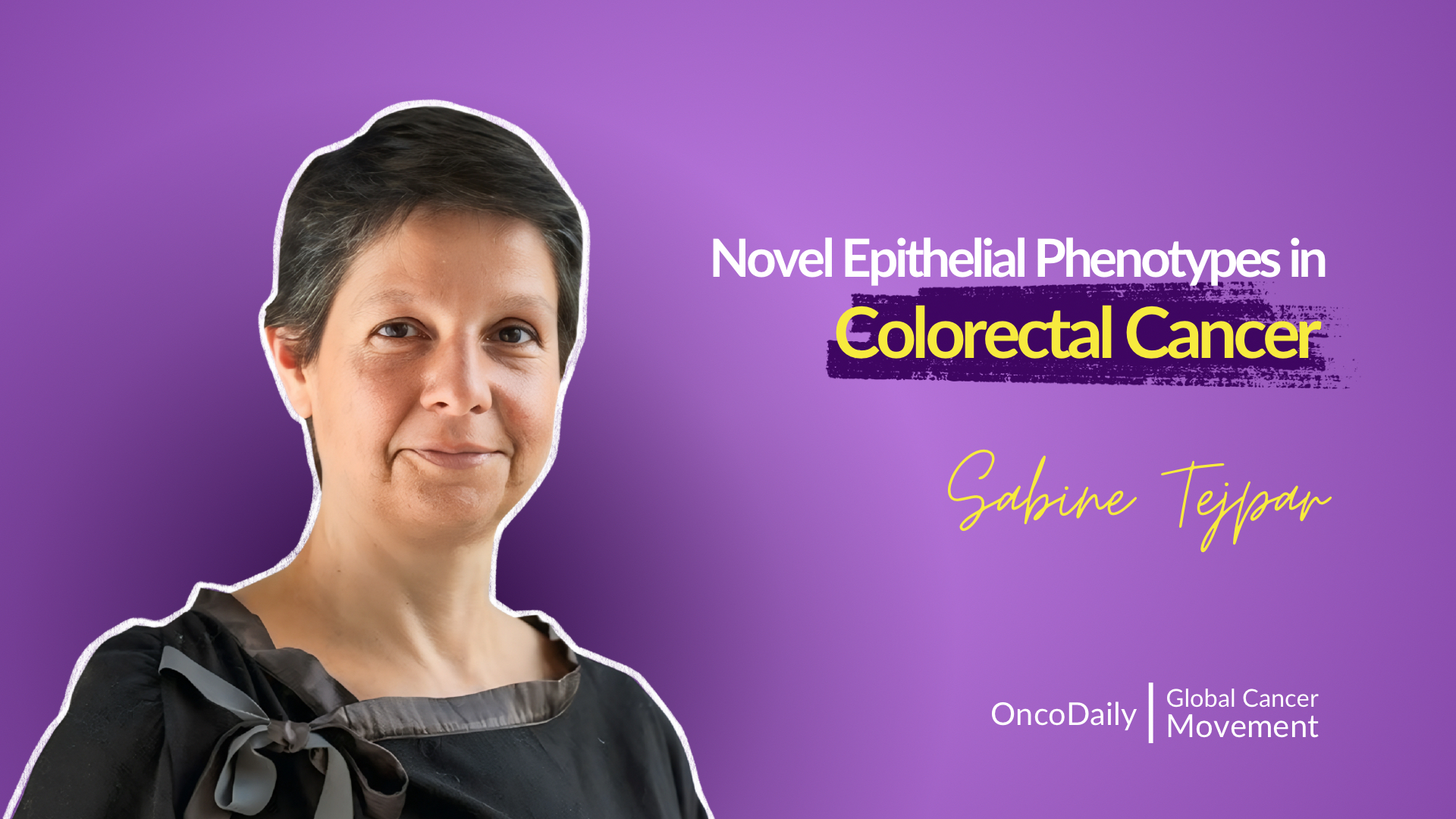In the inaugural event of the Global Cancer Movement, initiated by OncoDaily, Sabine Tejpar, Associate Professor of Medicine at KU Leuven, presents groundbreaking insights into colon cancer therapy, challenging the traditional Vogelgram model. She explores the complexity of colon cancer biology and the need for new drug development strategies.
Sabine Tejpar begins by discussing novel paradigms in colon cancer, emphasizing the need to adapt therapeutic approaches to align with evolving biological insights. She references the traditional Vogelgram model, which suggests a linear progression from adenoma to carcinoma driven by specific oncogenes. However, she argues that the current understanding challenges this linear model, necessitating a shift in drug development and clinical strategies.
A key concept introduced is the “Hox code,” which dictates regional cell plasticity within the colon, segmenting it into foregut, midgut, and hindgut regions. The Hox code influences cell identity and the potential for transformation. Additionally, the CDX2 marker, which distinguishes midgut and hindgut regions, plays a crucial role in diagnosing colon cancer by differentiating it from other gastrointestinal tumors.
The traditional model of colon structure involves crypts sustained by LGR5-positive stem cells, which replenish upper cells as they die. These stem cells depend on signals from fibroblasts for maintenance. However, APC mutations disrupt this balance by activating the Wnt signaling pathway independently, leading to uncontrolled growth and the formation of polyps. The speaker explains how these mutations create additional crypt-like structures throughout the colon, forming LGR5-positive tumor cells beyond their usual location.
She elaborates on the classic adenomatous polyp formation, driven by APC mutations and LGR5 expression, which leads to tubular adenomas packed with stem-like cells. The presence of CDX2 in these adenomas aligns them with the hindgut and midgut, while the absence of gastric mucins further differentiates them from other gastrointestinal lesions.
However, not all colon cancers follow this pattern. Sabine introduces serrated polyps, which differ significantly from tubular adenomas. Serrated polyps lack CDX2 expression and exhibit a gastric mucin phenotype, resembling foregut tissue rather than hindgut. These lesions grow differently, spreading laterally rather than forming traditional polyp structures, and possess a distinct gene expression profile that does not involve APC mutations or LGR5-positive cells.
Sabine emphasizes the importance of understanding these differences, as they impact diagnosis and treatment strategies. While classical adenomas rely on the Wnt pathway, serrated lesions follow a different biological trajectory, necessitating alternative therapeutic approaches. She also highlights the challenges in identifying these variations through standard histological techniques, as they can appear morphologically similar under H&E staining, yet possess distinct molecular and biological characteristics.
In conclusion, Sabine outlines the presence of at least two major epithelial states in colon cancer: the classical colonic CDX2-positive form and the fetal gastric-like form. This evolving understanding of tumor heterogeneity underscores the need for tailored therapeutic strategies and further exploration of spatial transcriptomics to reveal the organized structures underlying these tumors.
